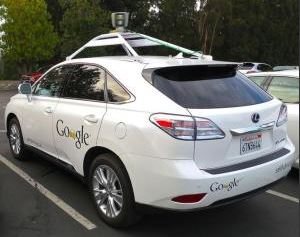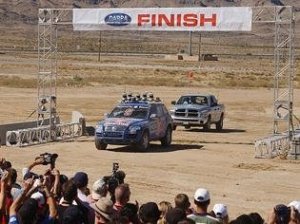
No doubt you’ve heard about Google’s “driverless car” that travels along the crowded highways and byways of America without the assistance of you, me or anyone else. Pretty impressive, no?
Yes, but not quite as monumental as this. About 500 years ago there appeared upon the scene a singular genius named Isaac Newton. That scientist didn’t do much. He only invented calculus. The scientist then used that mathematical tool to describe gravity itself and how it controls the orbits of the moon around the earth, the planets around the sun, and everything else that interacts with matter.
All that’s great, but what does it have to do with driverless cars? Just this. Newton said that “if I had seen a little further (than the rest us), it is by standing on the shoulders of giants.”
Google has balanced precariously on the shoulders of titans as well. After all, that company didn’t invent the autonomous car out of whole cloth. Like Newton, Google designed driverless cars using ideas that others created, starting as far back as the 1920’s. Let’s review the history of man’s attempt to make an autonomous vehicle there.
How Did It All Begin?
It all started in 1925 when Houdina Radio Control placed two cars on the road. The ordinary one in the back controlled the driverless vehicle in front via radio signals as both drove through the crowded traffic of New York City. Pretty primitive, but all great things start somewhere.
In the 1939 Worlds Fair, General Motors sponsored a Futurama exhibit where a radio-controlled car got its power from circuits embedded in the street.
In 1953, RCA Labs constructed a miniature vehicle that people operated via wires placed in the ground. In 1958, the State of Nebraska experimented with an autonomous vehicle on a public road, and GM put similar technology in its experimental Firebird cars.
In the 1960s, Ohio State University made experimental vehicles that electronic devices embedded in the roadway operated. And the United Kingdom tested a driverless Citroen, which worked via magnetic cables in the road
To sum, the four decades just reviewed produced fairly primitive technology involving radio-controlled vehicles on roads with wires placed in them. Not much happened in the 70s, at least as far as automatic vehicles go, so let’s see what took place in the 1980s.
Technological Advances Bring Autonomous Vehicles Closer to Reality
In that decade, Mercedes-Benz produced a vision-guided car that the engineers clocked in at 39 MPH on streets without traffic. In addition, the Defense Advanced Research Projects Agency (DARPA) sponsored the creation of an Autonomous Land Vehicle, which moved at a not-so-impressive 19 MPH while employing automatic controls and computer vision. Finally, HRL Laboratories created a navigation device that used sensors.
Computers Come to the Rescue
In the 1980’s, advances in digital technology allowed autonomous vehicle makers to create cars sporting computerized vision and navigation along with driverless controls. These operated on streets that actually contained other cars. That’s a few steps ahead of the vehicles they replaced, radio controlled cars driving on roads embedded with wires.
The 1990’s brought incremental advances in the worldwide attempt to create autonomous driverless vehicles that computerized “brains” could operate on regular streets.
For example, in 1991, Congress passed the Intermodal Surface Transportation Efficiency Act (ISTEA), which instructed the Department of Transportation to test by 1997 a system of automated vehicles and roads.
This demonstration occurred on time, In it, 20 automated cars and trucks drove in simulated street and freeway traffic. Nonetheless, the government ended this project due to budget constraints.
Other advancements in this technology occurred besides the ISTEA demonstration. For example, in 1994, two semi-autonomous cars roamed more than 620 miles in heavy traffic on a highway near Paris. They traveled at up to 81 MPH with the occasional assistance of human drivers.
In 1995, a Mercedes-Benz semi-autonomous car upped the speed to more than 190 MPH on the 990-mile trip from Munich to Copenhagen. And in the same year, a vehicle that Carnegie Mellon University built drove autonomously 98.2% of the time on a 3,100-mile journey.
The 1990s, then, brought forth semi-autonomous vehicles that could travel at high speeds on crowded streets and highways with only occasional human intervention.
The DARPA Challenge Helps Create Autonomous Cars
Finally, in the first decade of the 21st century, DARPA helped create the fully-autonomous vehicle. Here’s how it happened.
In 2004, the DARPA Grand Challenge ($1 million) required that vehicles drive unassisted on a 150-mile Mohave Desert course. None of them finished. In fact, a Carnegie Mellon University entrant drove the furthest, all of 7.32 miles. Not an auspicious beginning.

What a difference a year makes. In 2005, Twenty-four of the finalists managed to drive right through the record Carnegie Mellon set the previous year. Better yet, five contestants completed the course.
In 2007, DARPA instituted the Urban Challenge, which took place on 60 miles of roads in Victorville, California. Contestants completed this torture test by finishing in six hours or less and obeyed all traffic rules while dodging regular vehicles and other obstacles. Some six teams completed that course. How would you like to have driven one of the ordinary cars during that experiment?
Here’s a comparison between the 2004 and 2005 challenges, which were very similar, and the 2007 urban contest. In the first two races, the vehicles encountered more difficult obstacles but only saw other cars when passing them.
In contrast, the Urban Challenge tested the limits of the contestants’ extremely complex software. That’s because their autonomous vehicles had to obey all traffic regulations while avoiding other driverless cars on the route.
Current technology has traveled far from the radio-controlled toys of the 1920’s to the completely autonomous cars many institutions drove on the DARPA testing grounds.
After all is said and done, we see that Google, with its driverless vehicles, “stood on the shoulders” of many extremely dedicated engineers and scientists that came before it.

